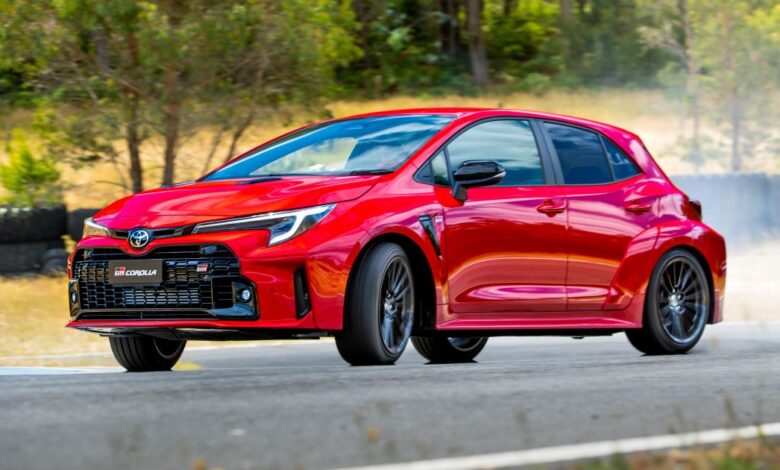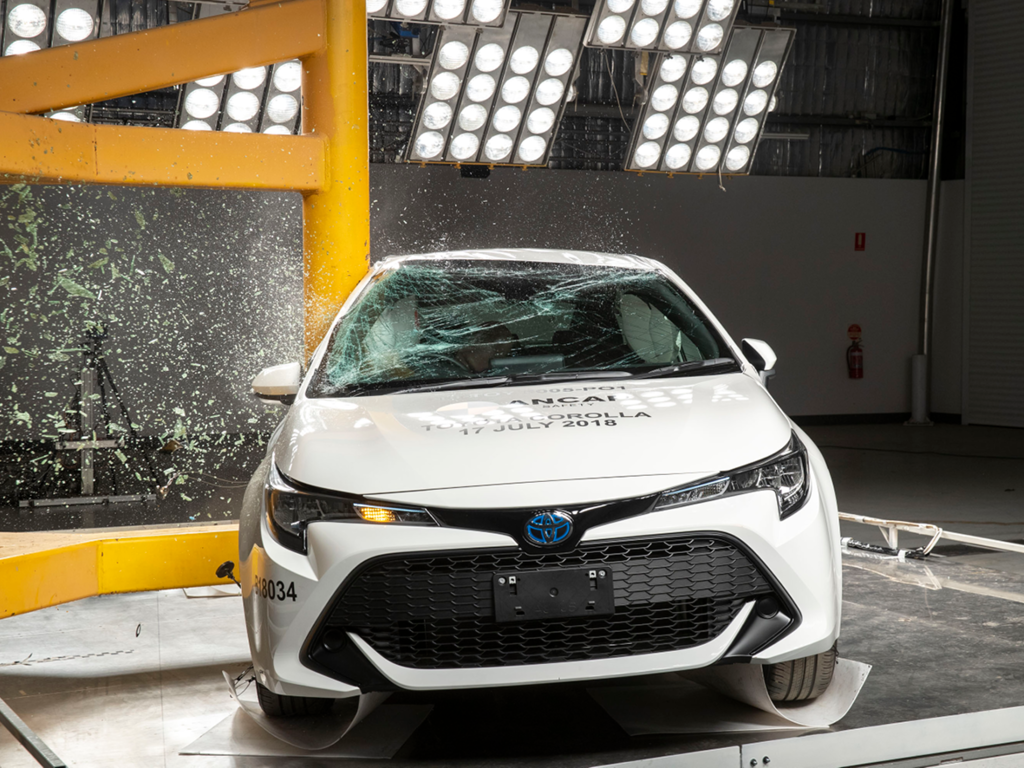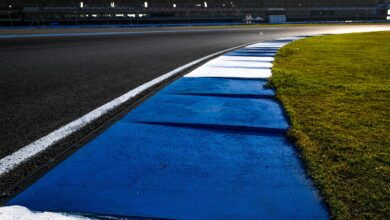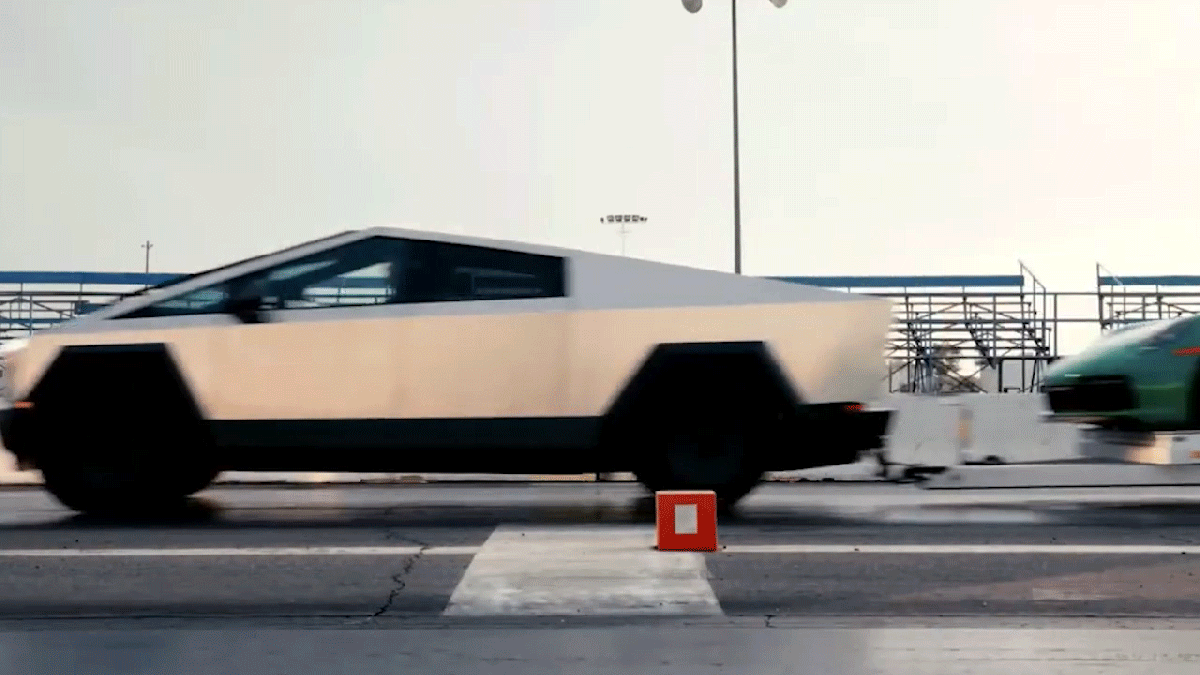2023 Toyota GR Corolla review

It feels like Toyota has been building to this moment for years – the launch of the new GR Corolla, a proper halo hot hatch for the Japanese company that has been trying to make “ever better cars” with that “waku doki” vibe.
That push has been lead by industry legend Akio Toyota – who, in case you didn’t know, goes by the name Morizo when he’s behind the wheel… hence the special edition model’s name.
Now the claim that this is Toyota’s first “real” hot hatch might sound derogatory to anyone who owns a GR Yaris, but no offence, this is what many will consider to be a real hot hatch.
It’s the right size, competing in the small car class rather than the light car market. And it’s up against some serious rivals – the Volkswagen Golf R and Honda Civic Type R. That is to say, it’s launching where the competition is at its best.
Plus, it has a few points of difference compared to both of those models – it’s manual with all-wheel drive only. And, it has a three-cylinder turbo-petrol engine!
So can it really be a proper hot-hatch? Read on to find out.
How much does the Toyota GR Corolla cost?
The GR Corolla is not cheap, with an MSRP of $62,300 plus on-road costs for the mainstream GTS five-seat version.
Meanwhile the track-focused Morizo version – which takes out a bunch of stuff to save weight but adds some bits to improve performance – is a $77,800 proposition.
You’re buying scarcity with the latter, though, as – at least in the initial 12 months of deliveries – the Morizo will be limited to just 25 examples. The GTS is also going to be scarce, with only 700 examples coming in the first 12 months.
For a bit of context, the Toyota GR Corolla is a chunk cheaper than a VW Golf R ($66,990), but its German rival has a more powerful four-cylinder engine, a dual-clutch auto transmission, and more luxurious interior appointments. Not to mention adaptive dampers and bigger wheels.
It’s also more affordable than a Honda Civic Type R, which lists at $72,000 drive-away. That model is manual only like the GR Corolla, but front-wheel drive. And, the order book for it is pretty much full, with wait times blowing out until late-2024 last we checked.
While I honestly didn’t mean to slag off the Toyota GR Yaris in the intro, that model does offer something very similar but for a whole lot less money. The GR Yaris is $49,500 and the top-spec Rallye is $54,500, so it’s well worth figuring out if you can make the three-door body and strange ergonomic quirks work for you.
What is the Toyota GR Corolla like on the inside?
It perhaps isn’t as special as you might expect that it’s going to be, especially when you’re paying this kinda dough – or, another way of putting that is the Corolla ZR (like the one I tested recently) feels really good for $25k less.
Sure, it does score the GR bits that you would expect, including a GR steering wheel (leather-lined, three-spoke, heated) and GR sports seats (heated, manually adjustable, with a suede and fake leather trim combination), plus GR carpet floor mats, and a dark headlining like the ZR.
Otherwise, this is very similar to other Corollas inside – that isn’t to say that there’s anything wrong with the interior, it’s just that it might not feel as special as some buyers might wish that it did.
The push-button starter has the GR logo on it, and so does the manual shifter and the key fob, but there’s nothing special like ambient lighting or different finishes to help lift the ambience even further. Dare I say it – the ZR’s cabin in red looks and feels heaps more special.
Storage is as you would expect; there are two cupholders between the front seats, bottle holders in the doors, a storage tray with wireless phone charger in front of the shifter (with the same easy-to-accidentally-switch-on seat heater buttons when you drop your phone in), plus a fine little glovebox.
However, unlike the standard model, there is no covered centre armrest between the front seats, presumably to save weight and offer you a bit more trigger room for your elbow if you’re piloting it on a track and flicking the manual handbrake (more on that soon).
Obviously, there’s also the GR-Four all-wheel drive controller behind the shifter, which allows you to adjust the bias of the four-wheel-drive system, and just like other Corollas there’s a drive mode selector, which includes Eco, Normal, Sport and Custom – the latter of which allows you to adjust the steering weight, engine response and air-con effectiveness.
As with the top-spec standard Corolla, you get a big 12.3-inch driver info screen which offers plenty of bespoke information that is tailored to performance driving. There’s a bunch of different screen options, so you can keep an eye on the vitals or just take a glance at the head-up display on the windscreen.
Now, let’s consider back-seat space, which is not one of the Corolla Hatch’s best attributes normally – and the same can be said for this version. With the driver’s seat set for me (182cm/6’0”), I had only just enough space to clear my knees and toes, while the headroom is tight too, and you will need to watch your noggin getting in and out as well.
You might fit three skinny adults across, but it’s best left as a two-seater for back seat riders. If kids are part of your crew, there are dual ISOFIX points in the window seats, and three top-tether points as well.
One thing this Corolla hatchback misses out on that all other versions get in Australia is rear-seat directional air vents, because that front centre console box has been axed. There is access to a flat storage tray there instead, and two USB ports as well.
There are small bottle holders in both rear doors, a pair of cupholders in the rear centre drop-down armrest, and map pockets on the backs of both front seats as well.
Now, this wasn’t intended to be a review of the Morizo Edition, but I did see the car at the event, and it has no rear seats at all. Instead there are two thick body bracing frames that run the width of the cabin behind the front seats, which allow you to secure a set of spare wheels for track days. Or it could just be the fastest courier panel van on the planet.
Now, boot space – another challenge for the Corolla Hatch – is even LESS in this GR version compared to core models.
Toyota states there is 213 litres of cargo capacity for GTS models, which is 4L fewer than the versions of the Corolla Hatch that have a spare wheel (the ZR Hybrid has a repair kit and thus scores 333 litres).
As for this one? No spare here, to save weight, while the battery has been shifted to the boot area as well, just underneath the false floor.
Note: Apologies for the lack of interior shots. There were next to none in the Australian media kite
What’s under the bonnet?
Three cylinders of absolute fury, that’s what!
The GR Corolla has the same 1.6-litre turbocharged three-cylinder petrol engine as the GR Yaris, but in this iteration it’s even more potent.
Power output is 221kW (6500rpm), while torque is a sizeable 370Nm (3000-5550rpm). That kilowatt figure, according to Toyota, puts the GR Corolla on par with the Bugatti Chiron hyper car for kW per litre of engine output.
The GR Corolla is also 21kW healthier than the GR Yaris, and just like it’s smaller sibling, it comes with a six-speed manual transmission as standard. There is no auto option available… yet.
It is all-wheel drive, with Torsen limited slip differentials at both axles. Choose the Morizo Edition and the engine power output is the same (221kW) but the torque figure jumps up to 400Nm. It also gets a revised six-speed manual with altered ratios.
A few more figures for you here – the GR Corolla GTS has a kerb weight of 1485kg, while the Morizo is notably lighter, at 1440kg.
The GTS version has a 0-100km/h claim of 5.29 seconds while the Morizo claims a slightly quicker 5.21s..
How does the Toyota GR Corolla drive?
Grrrrr might have been an even better name for this variant, because it’s like an angry bull ant trying to bite at your ankles on a bushwalk.
The powertrain is seemingly constantly egging the driver on to get more out of it, and on public roads that could mean you’ve got to be very, very careful. It has plenty to give – there is a little bit of low-rev lag, but it builds its power beautifully from about 3000rpm through to the redline, and it sounds pretty grunty while doing it.
The trademark three-pot burble is evident, and you can hear turbo whistle and wastegate flutter on lift-off, too.
However, it’s not too loud – in fact, I can foresee some potential complaints from enthusiasts who subscribe to the “pop and crackle” mindset that this sounds a bit meek. I like pops and crackles. I heard maybe one little fart from the exhaust, though I can’t be sure that wasn’t my co-driver.
The six-speed manual gearbox’s shift action is okay. It’s not Porsche-like, and frankly not even as slick as the last Honda Civic Type R I drove, but it does have a short throw and close gates to make it feel sporty. The clutch is fairly weighty, so in stop-start traffic it can be a little bit annoying, but it’s not too heavy to live with.
There is an intelligent manual mode that will rev-match for you – if you’re not great at heel-and-toeing, you will impress your friends because it does a bloody good job of blipping and rev-matching on the downshift.
The steering is pretty sweet, with a nice amount of weight and good accuracy to the wheel as well, although like most electric power steering systems there’s not that much feel to the driver’s hands – as in, you’re not going to get a Lotus Elise-like drive here, but you honestly wouldn’t want that in a car like this.
I also noticed a tiny bit of understeer through tighter corners, which isn’t unusual in an all-wheel-drive car, but I was expecting just a little bit more bite and tightness at the nose through a set of really tight bends.
I should point out here that this was my testing on a public road, with electronic stability control on, and I was playing with the AWD bias at times. I found that the default 60:40 mode allowed for a better ‘slingshot’ out of a corner, while the more tail-happy 30:70 setting was definitely more catered towards sliding the car around in cornering.
It doesn’t squirm like the GR Yaris does (I’m okay with that) under throttle, and it feels really nicely planted and stable at speed.
There is a neat trick, though, as I found on the skid pan at Sydney Motorsport Park. The aforementioned manual handbrake works differently to in most manual cars, in that you don’t need to depress the clutch as drive is cut to the rear axle when you fling the handbrake up.
It means you can plant your left foot (so you stay more stable and in control of the drive), lift the handbrake to let the back-end fling, and then power out on the throttle. It took some perfecting, but this was a lot of fun – I tried it in 30:70, but found it was a bit too tail-happy, while in 60:40 it really did have that front-drive slingshot-style acceleration out of the slide.
What impressed me, no matter the mode, was the body control in the bends – the GR’s suspension offers a firm feel on the road, but still a level of comfort as well. It will hold its line nicely and also, there’s very little body roll to contend with.
Now, about that firmness… it isn’t as plush riding or cosseting as a Golf R. The VW is a superb hot hatch because it manages to blend the comfort you want with the control you need. This car does that too, it just doesn’t have the smarts of adaptive chassis control to allow you to adjust things to be more comfortable, if you want them to be.
They are very different cars – even Toyota admits that – but the Golf R, in my opinion, would be a much easier vehicle to have as a daily driver, and not just because it has the excellent DSG auto fitted as standard.
For those who will daily their GR Corolla, there is a slight penalty to pay when it comes to tyre noise. At most speeds, there’s quite a bit of noise intrusion into the cabin, so if you are someone who values tuning into their favourite podcast on the road, you might find that the volume on the stereo will need to be a little higher than usual.
All told though, this is a special car. It’s not just good for a Corolla, it’s a good hot hatch, full stop.
What do you get?
The Toyota GR Corolla is a pretty well specified car, with all the best stuff you can get in a standard Corolla, and more additional gear to help justify the cost.
GR Corolla GTS highlights:
- 18-inch Enkei lightweight alloy wheels
- 235/40 R18 Yokohama ADVAN tyres
- AWD modes (60:40, 30:70, 50:50)
- Front and rear Torsen limited-slip differentials
- LED headlights with auto high-beam
- Triple exhaust tips
- Toyota Connected Services
- 12.3-inch digital instrument cluster
- 8.0-inch touchscreen
- Satellite navigation
- Wireless Apple CarPlay
- Wired Android Auto
- Heated leather steering wheel
- Heated front seats
- Wireless phone charger
- 8-speaker JBL audio system
- 1x USB-C port in centre console
- Dual-zone climate control
- Manual seat adjustment
- Rear privacy glass
- Power-folding and heated exterior mirrors
- Tyre repair kit
GR Corolla Morizo edition adds:
- Carbon-fibre roof
- GR badge on intercooler
- 18-inch BBS forged alloy wheels
- 245/40 ZR18 Michelin Pilot Sport Cup 2 Connect Tyres
- Unique Morizo Edition shift knob design
- Carbon-fibre blank plates for rear window switches
- Front sports seats with harness holes
- Slots in the carpet to allow harness fitment
- Additional bracing in the cabin incl. harness-rated top bar
- Fixed rear windows
- 2-speaker audio system
- Removes dual-zone climate control
- Removes heated steering wheel
- Removes wireless phone charger
- Removes rear seats
- Removes parking sensors
- Removes satellite navigation
- Removes electric rear windows
- Removes Rear windscreen wiper
What’s missing? You can’t get it with a sunroof, and the media screen is a bit small by current standards, at 8.0 inches.
Further, European versions of the Corolla score a larger media screen (10.5-inch) available locally in other models, but it’s not on the cards for here – at least not yet.
Colours
Here’s a rundown on the colour options and paint prices.
GR Corolla GTS
- Glacier White: $NCO
- Ebony (black): $NCO
- Liquid Mercury (grey): $575
- Feverish Red: $575
GR Corolla Morizo Edition
- Frosted White Pearl: $NCO
- Tarmac Black: $NCO
- Matte Steel (exclusive): $2500
Is the Toyota GR Corolla safe?
There is currently no rating specific to the Toyota GR Corolla, however, according to ANCAP’s website “all variants” of the Corolla Hatch wear a five-star ANCAP safety rating from 2018 testing.
Toyota Australia made it clear that just because the GR Corolla has a different intent to the standard Corolla range, it is designed to offer the same advanced safety features available to other owners.
It also has the Toyota Connected Services system, which can call emergency services in the event of an accident.
GR Corolla GTS features:
- Autonomous emergency braking (AEB)
- Pedestrian detection (day/night)
- Cyclist detection (day)
- Intersection assist
- Emergency steering assist
- Lane departure warning
- Lane Trace Assist (lane centring)
- Speed sign recognition
- Blind-spot monitoring
- Rear cross-traffic alert
- Reversing camera
- Front and rear parking sensors
- 7 airbags incl. driver’s knee
Choose the Morizo model and you lose the parking sensors, and there’s also no rear wiper.
How much does the Toyota GR Corolla cost to run?
The GR Corolla still scores the company’s five-year, unlimited-kilometre warranty, which is extendable to seven years for the powertrain if the logbook servicing is done on time.
Toyota spokespeople did state that while track driving is covered, it will be assessed on a “case by case basis”. So make sure you figure out what that might mean for you, if you’re considering buying one and tracking it.
The servicing intervals are shorter than most other Corollas, but in line with the GR Yaris, at every six months or10,000km. There’s a capped price plan for three years/60,000km, with those first six visits pegged at $300 a pop.
The official fuel consumption figures are reasonable for a hot-hatch, at 8.4 litres per 100 kilometres for the GTS and 8.6L/100km for the Morizo Edition. The latter is lighter, but has some adjustments to the gear ratios and also more aggressive tyres, which could be the reason it has a higher official number.
If you’re out on a country drive you might see close to that, provided you’re obeying the rules. But during my road drive on the launch, I saw a displayed 10.2L/100km through a mix of urban running, freeway testing and spirited driving on country back roads.
Both models have a 50-litre fuel tank, with a thirst for 98 RON premium unleaded juice. Obviously, you’ll see much higher on track.
CarExpert’s Take on the Toyota GR Corolla
If you can live with the manual-only proposition, and can deal with the smaller boot and less comfy ride than its rivals, then the Toyota GR Corolla will make you very, very happy.
I think it’s safe to say there’s never been a better Corolla than this, at least when it comes to performance.
And “waku doki”? Yep. Nailed that, too.
Toyota – and indeed, master driver Morizo – can rest assured that this car is not just a proper hot hatch, but a full-on performance car that just happens to be in a hatchback body.
Click the images for the full gallery




























